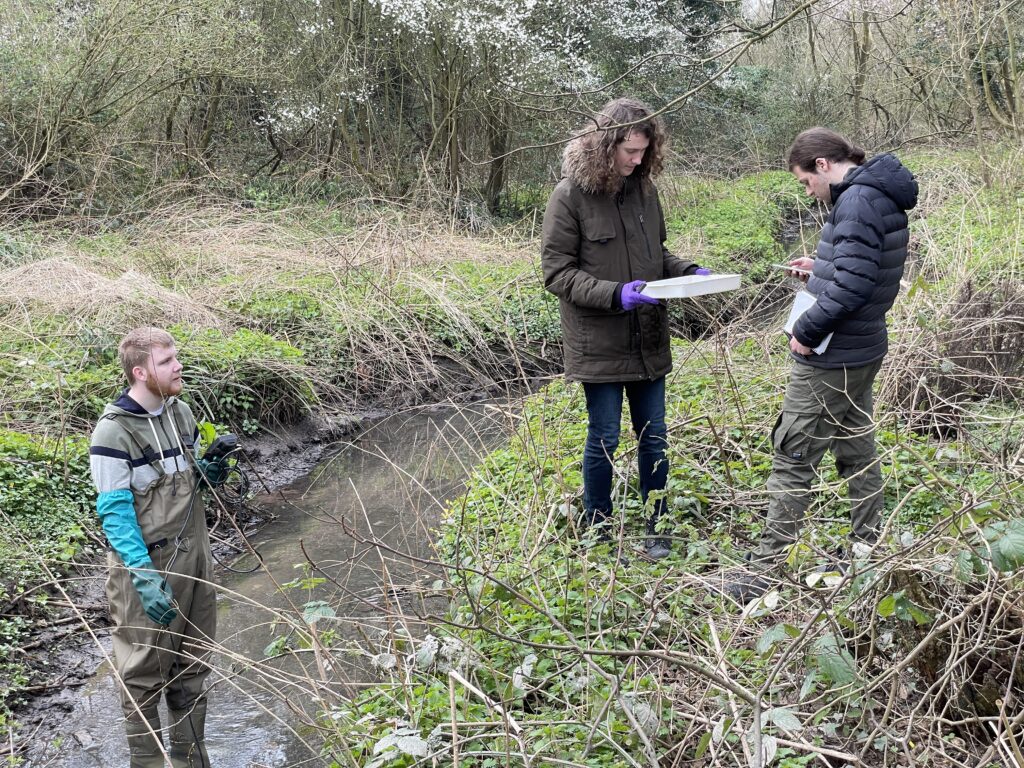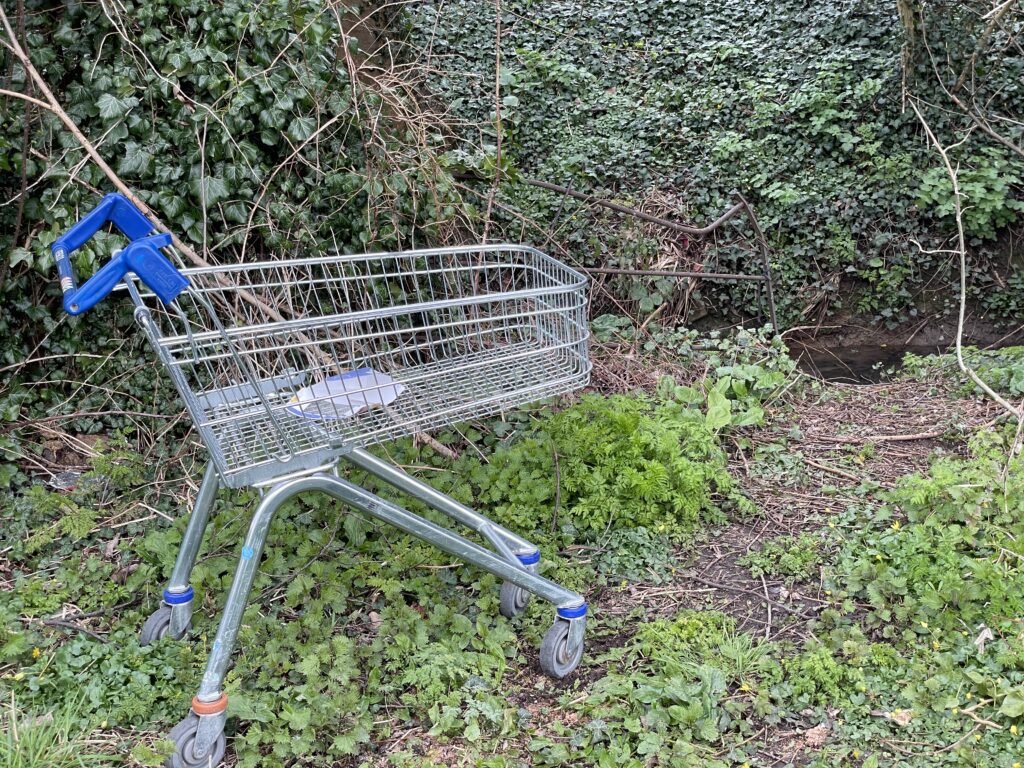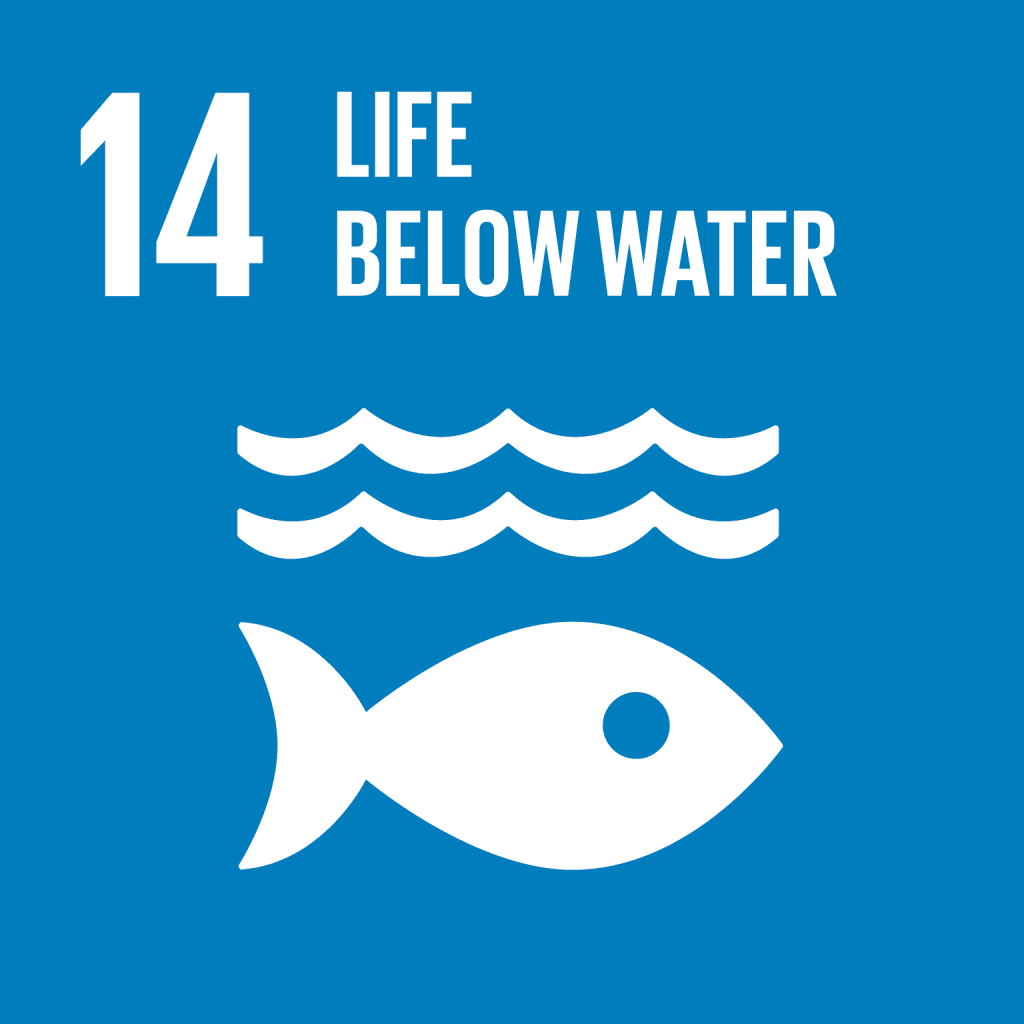University of Worcester’s geography students visited Duck Brook to help the City Council and local environmental groups monitor the local aquatic ecosystem. Written by Katy Boom and Dr Sian Evans. Edited by Rosie Bramwell.
Duck Brook is next to the University Playing fields in Battenhall, Worcester, just a 40-minute walk from the St Johns Campus. For 8 years, geography students have helped the City Council and local environmental groups monitor and analyse these important aquatic ecosystems. The majority of the fieldwork is undertaken upstream close to the University playing fields. Some of the fieldwork also occurs at Cherry Orchard Local Nature Reserve, previously a landfill site, which remained undisturbed since 1987.

Students getting involved
Advised by lecturers in the School of Science and the Environment, students have been undertaking aquatic investigations to explore water quality. Additionally, they have conducted social science surveys of citizens using the area to help understand how it is used, and valued. Their findings are used to suggest improvements to this important local ecosystem.

Through the multitude of physical pursuits in urban parks (walking, running, cycling, tennis, football etc.), people not only have the opportunity to get fit but also to have social interactions with others in their neighbourhood. They therefore influence both the physical and mental well-being of local people (Jackson et al., 2003; Aerts, 2018). They also have a role in building social ties between different people in the community (Kaźmierczak, 2013). Students also gathered data from the local community to measure these impacts.

Negative impacts
It’s not all positive: green areas are also associated with fear of crime (Sreetheran et al, 2014), urban conflicts e.g. between cyclists and pedestrians (Living Streets, 2016), and a source of allergens (Cwik et al., 2018).
Unfortunately, Duck Brook, along with many urban green spaces suffers from littering. Students have looked at the impact of litter and plastics, in particular on stream health and aquatic ecosystems.
Duck Brook Community Orchard
The Community Orchard (part of the allotments) provides important ecosystem services, including Provisioning (food), Supporting (habitat and biodiversity) and Regulating (pollination) services.
Wildlife corridor
As part of a Natural Networks project between Worcester City Council, Worcestershire Wildlife Trust and the Environment Agency, 12 fruit trees were donated to Worcestershire Community Land Cooperative to plant in Duck Brook Community Orchard. The ‘avenue of fruit trees’ here includes heritage varieties such as the Worcester Black pear. Students helped to establish this small land use co-op, and have helped with tree planting. Students and staff have also taken part in Wassailing – a traditional pagan ritual to help with fertility in orchards. Read a blog from Worcester’s Mayor to find out more.
Wetland
A small pool containing mostly bulrushes (Typha) provides additional important habitat for wildlife, as well as playing an important role in storing and purifying runoff from adjacent land.
Pressures include pollutants from diffuse sources, such as run-off from agricultural land and roads, and point sources from industrial estate and residential properties.

Health system “indicators” include the ecological status, water quality, hydrology, geomorphology and availability of physical habitat. University of Worcester students have helped to monitor these indicators over many years to help take care of Duck Brook’s aquatic ecosystem.
Take a look at our Living without plastic post to see how you can reduce your waste and have a positive impact on our local ecosystems!

References
Aerts, R., Honnay, O., & Van Nieuwenhuyse, A. (2018). Biodiversity and human health: Mechanisms and evidence of the positive health effects of diversity in nature and green spaces. British Medical Bulletin, 127(1), 5-22. doi:10.1093/bmb/ldy021
Ćwik, A., Kasprzyk, I., Wójcik, T., Borycka, K., & Cariñanos, P. (2018). Attractiveness of urban parks for visitors versus their potential allergenic hazard: A case study in Rzeszów, Poland. Urban Forestry & Urban Greening, 35, 221-229. doi:10.1016/j.ufug.2018.09.009
Jackson, L. E. (2003). The relationship of urban design to human health and condition. Landscape and Urban Planning, 64(4), 191-200. doi:10.1016/S0169-2046(02)00230-X
Kaźmierczak, A. (2013) The contribution of local parks to neighbourhood social ties. Landscape and Urban Planning, 109(1), 31-44. doi:10.1016/j.landurbplan.2012.05.007
Living Streets (2016). Case Study 4 (p 27-32) in Sharing the Space: A study of four shared-use paths in London. Available at http://www.friendsofburgesspark.org.uk/wp-content/uploads/2016/04/Sharing-the-Space-final-report-March-2016rd.pdf [accessed 28/01/20]
Sreetheran, M. and Konijnendijk van den Bosch, C. (2014). A socio-ecological exploration of fear of crime in urban green spaces – A systematic review. Urban Forestry & Urban Greening, 13(1) pp1-18.